How Often To Water Sansevieria? (Snake Plants Watering Guide)
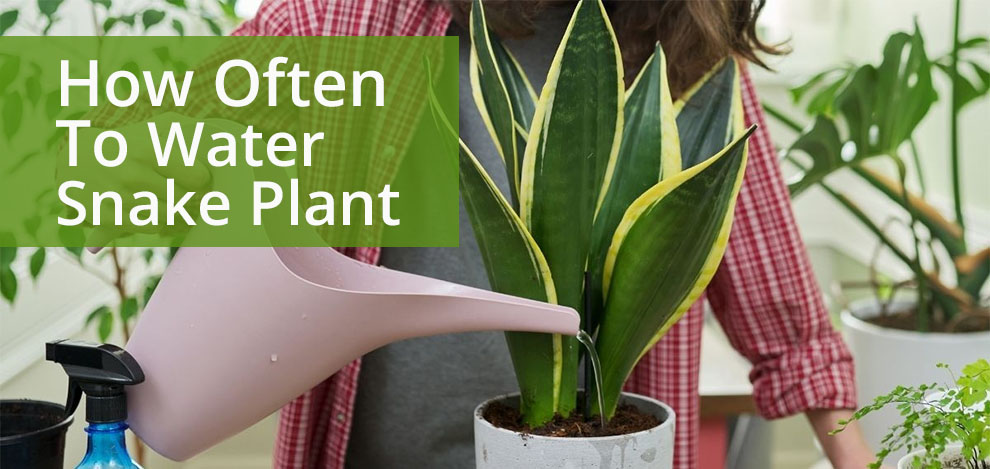
Several people worldwide have houseplants strategically placed in their houses for decoration. Some even do it from the view of a feng shui. However, did you know that some indoor houseplants also have a myriad of health benefits?
One such plant is the snake plant. Snake plant is an incredible plant that looks good wherever placed and improves the air quality around the house.
Today, we will address one of the most important questions, i.e., how often to water snake plants? Let’s find out how much water does a snake plant needs!
In This Article:
- What Is A Snake Plant?
- Snake Plant Common Names
- How Often To Water Indoor Snake Plants?
- Factors That Determine How Often To Water Sansevieria
- How Do You Know When Your Snake Plant Needs Water?
- How Can I Tell If I Am Overwatering My Sansevieria?
- Varieties Of Snake Plant
- Factors Affecting Snake Plants Growth
- Where To Buy Snake Plants?
- Frequently Asked Questions
- Final Word
What Is A Snake Plant?
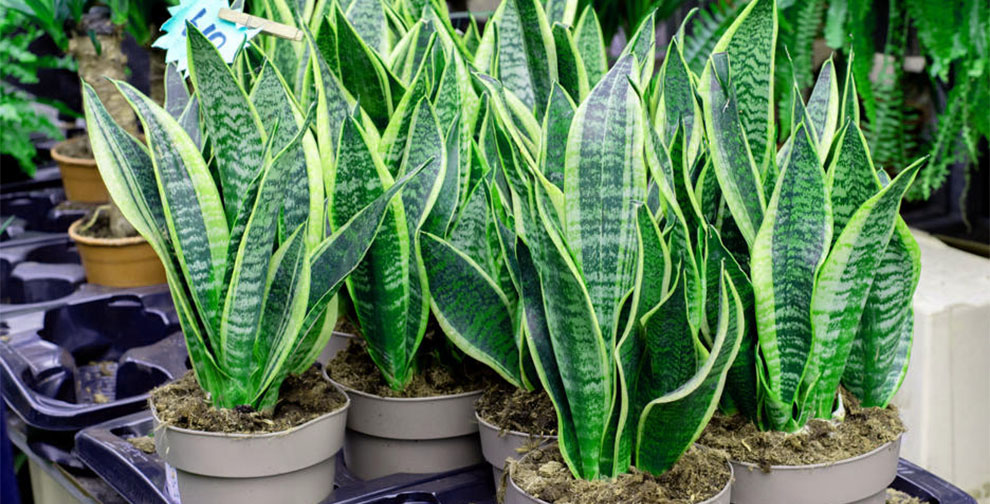
Of course, this guide revolves around how many times to water snake plants, but before we touch that, you must understand what’s special about a snake plant?
The snake plant is a resilient, carefree houseplant. Thanks to its sword-like, tall leaves and impeccable vegetation, it makes for a bold, architectural highlight in any home setup. More so, once you know how often to water snake plants, you are good to go as that is the maximum chunk of care-aspect of the snake plant.
So, anyone who has enjoyed only little success with houseplants due to lighting issues will cherish this plant. It is a tolerant houseplant, which can survive even the most unfavorable conditions or the neglect and abuse a plant can receive.
What Are The Other Names Of Snake Plant?
Also known as Sansevieria (pronounced as san-se-vi-ee’-ri-ah), the Snake plant is a reputed member of the Lily family. However, it goes by several other prevalent names, such as Mother-in-Law’s tongue and Saint George’s sword, because of its appearance and the sharp margins of the leaves.
Many even refer to it as the viper’s Bowstring-hemp since it is a prevalent plant fiber source utilized in making bowstrings.
How Often To Water Mother In Law Tongue (Snake Plant)?
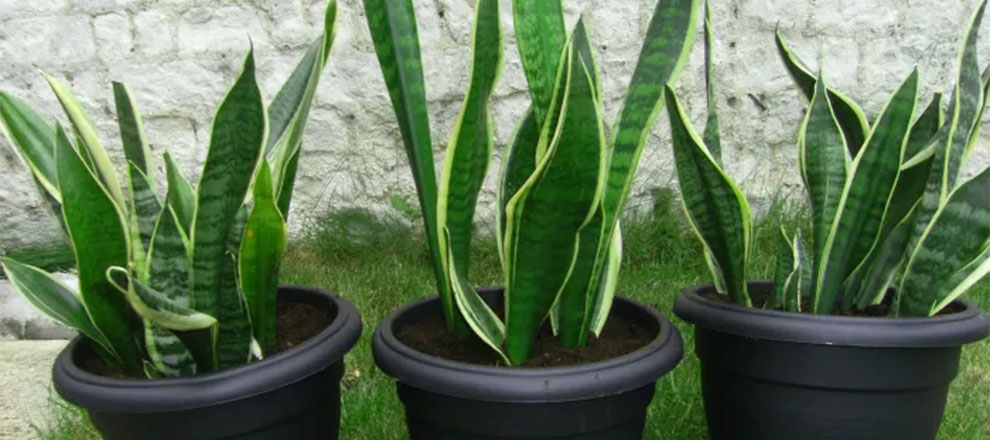
We have arrived at the central part of this guide – how often to water indoor snake plants? Though it is drought-resistant, the roots tend to rot when exposed to overwatering. As a matter of fact, incorrect watering is one of the prime conditions for diseases in snake plants. Hence, it is quintessential to know the watering frequency.
How much water does a snake plant needs depends on multiple factors. The trick is to know when the soil feels dry.
So, how often to water snake plants in winter? The plants can go for two months without water in the winter months. Keep a check on the soil and water accordingly.
On the other hand, how often to water sansevieria during the summer months? In warmer months, you should water the snake plant once every two to three weeks.
Factors That Determine How Many Times To Water Snake Plants
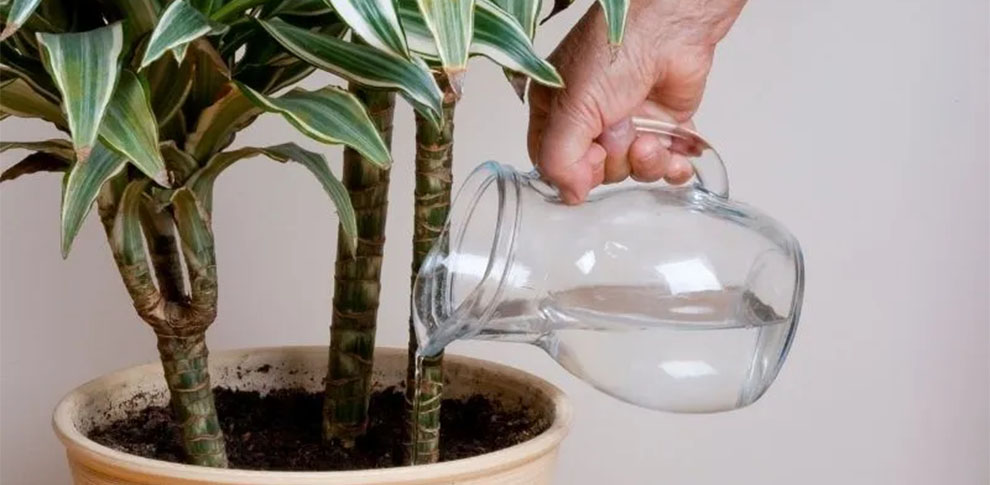
Various environmental factors dictate the watering frequency in the snake plants. Here, we will enlist the factors one by one:
1. Plant’s location
Where you keep the snake plant is a vital factor in its growth and water requirements. You need to avoid placing the plant in an area exposed to direct sunlight or hot air.
Generally speaking, if the sunlight exposure is high, the plant can get sun-scorched and water evaporation will be more. Hence, the watering requirement will be more frequent.
2. Summer Vs. Winter Vs. Autumn
The snake plant wakes up from dormancy during the spring season and shows growth. Hence, it will need more water during this period, compared to the rest of the year.
On the other hand, in the summer months, the growth slows down. Hence, the water requirement is not much.
In the autumn months, the growth is further slowed down, and you will see almost negligible growth in winters. Hence, during that time, watering needs are minimal.
3. Soil
Water-retentive soil is not suitable for a snake plant. Thus, you must pick a potting mix, which holds the nutrients, but releases moisture fast. There is nothing better than a standard cactus mix.
4. Temperature and Humidity
The snake plants thrive well between55° – 85°F. However, if the temperature goes below 50° F (10°C), the snake plant begins to droop. So, typically, the watering requirements will be more during higher weather conditions.
Snake plants grow well with up to 40% humidity in the air. Higher humidity, lower are the chances of soil drying out and hence, lesser the need of re-watering.
5. Plant’s size
Naturally, the bigger the plant, the more will be the watering requirement.
6. Pot Type and Size
The kind of container you use for the snake plant will also influence its watering requirement.
For instance, plastic or a glazed pot does not let the water evaporate from the sides. But on the other hand, the porous terracotta pot tends to lose water via evaporation. Hence, they need more frequent watering.
Pot size plays an important role too. Bigger pot mean more soil, more soil implies greater moisture retention after watering session, hence reduced watering needs. But, there are greater chances of root rot in the case of extra-large pots too.
How Do You Know When Your Snake Plant Needs Water?
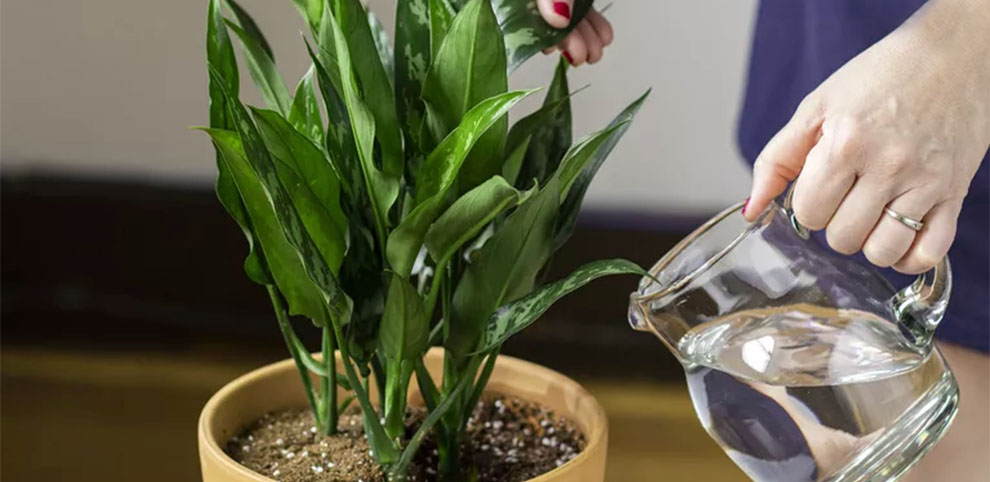
Sadly, the symptoms of overwatering and underwatering are more or less the same. Hence, for beginners or amateurs, it can be pretty tricky to decide how often to water indoor snake plants.
But, with time, you will be able to tell whether the snake plant needs water or you must curtail water. So, the more parts you check, the more noticeable it becomes for you.
Some symptoms of an underwater snake plant are:
- Brown tips
- Dry leaf edges
- Wrinkled leaves
- Dry soil
- Leaves falling or drooping
- Leaves beginning to turn brown or yellow
- Curling of the leaves
- Slow or stunted growth
How Can I Tell If I Am Overwatering My Sansevieria?

You can know that you are overwatering your snake plant when:
- Smelly soil
- Rotting roots or roots turning brown or black
- Squishy, soft, or mushy leaves
- Drooping leaves
- Falling leaves
- Leaves turning yellow
- Mold on the plant
- Loose roots
- White patches in the soil
- Flies abounding
Varieties of Snake Plant
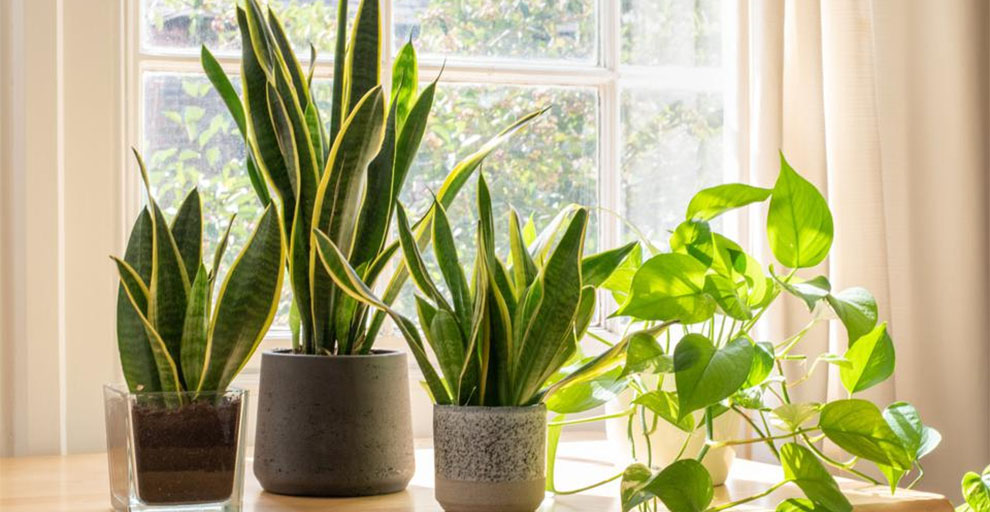
Now that you know how often to water sansevieria, we will discuss the different varieties available in snake plants.
Broadly, there are more than sixty different kinds of snake plants to choose from. Some are short and form compact clusters, while others may be as tall as 12-feet. You need to know how fast does a snake plant grow to take care of it better.
Will the answer on how often to water mother in law tongue be different for different varieties? We will find out.
1. Sansevieria Trifasciata ‘Laurentii’
It is one of the tallest varieties in the sansevieria trifasciata with green and yellow leaves. Usually, this plant grows somewhere between 2-4 feet.
2. Sansevieria Cylindrica
This snake plant looks quite like the bamboo plant and can grow about 20-24-inches tall. An excellent feature of this plant is that it can survive well even in indirect sunlight. How often to water sansevieria cylindrica? You may water it twice a week in the growing season.
3. Sansevieria Patens
This snake plant forms a rosette structure, and it has green leaves lined in a dark shade. You can expect a decent length, up to 3 feet from them. Bright and indirect sunlight, followed by infrequent waterings, works well for this plant.
4. Sansevieria Ballyi
This snake plant is also known as dwarf sansevieria. The plant grows about six inches tall. It is full of dark green leaves, followed by a light green stripe on the ends. How much water does a snake plant need? This is a sensitive plant, but it does not need much water, as overwatering might result in root rot.
5. Sansevieria Eillensis Chahin
It is a blue-green snake plant with long leaves. The plant grows about five inches tall and has spiky flowers, which grow about 12-inches. How often to water sansevieria Eillensis Chahin? This is a drought-resistant plant. Therefore, it does not need daily watering.
Factors Affecting Snake Plants Growth
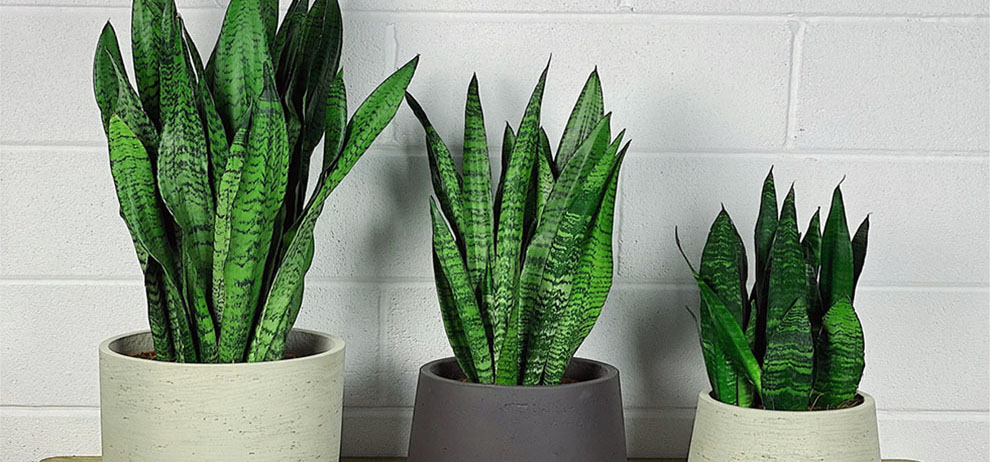
Now that you have learned how often to water snake plants, you must know other factors affecting or influencing their growth. These include:
1. Right Amount of Sunlight
Snake plants like steady and indirect sunlight with only a little direct sun. They can work well in full sun conditions and survive well in dim lit conditions.
2. Humidity and temperature
Snake plants enjoy warmer weather. However, if exposed to temperatures below 50 degrees Fahrenheit, the plant’s health is significantly affected. Thus, it would be best to keep the place in a place where it is shielded from drafts. The ideal temperature range for the plant is between 70- and 80-degrees Fahrenheit.
3. Soil Type
The snake plants thrive well in a well-drained, loose mix. The plant proliferates in sandier soils. You can utilize potting media low in peat content. Peat thrives excellently in varied conditions, but it tends to get tightly packed, and at times, it suffers draining or rehydration issues. Hence, you should opt for an all-purpose cactus potting soil.
4. Water Requirements
Between two waterings, you must give the plant ample time to dry. The watering should be limited to once every month in the winter months. However, if the soil looks dry to you, you can water it in-between. Under-watering can still not damage the plant, but too much water can kill the plant. Check out some watering cans you could buy for in-house use.
5. Fertilizer Mix
You can feed a mild cactus fertilizer to the plant during the growing season. Alternatively, you can also bestow it with a balanced liquid slow-release (10-10-10 fertilizer) diluted to 50 percent of its strength. Avoid using fertilizers on your snake plants in the winter months.
Where To Buy It?
Snake plants are readily available. You can buy them offline or shop for a snake plant online. Both online and offline, almost all varieties of snake plants are available for easy access.
Related: Snake Plant Benefits |How long do snake plants live? |How to make snake plants grow faster? |Disadvantages of A Snake Plant
Frequently Asked Questions
Ques 1. Do snake plants purify the air?
Ans. Like most other household succulents, even the snake plants do a great job filtering the indoor air. However, a unique thing about this indoor plant is that it is one of the very few indoor plants that help convert CO2 into oxygen during the night hours.
This air purifying quality of the snake plant makes it a perfect pick for offices and homes. The plant can eliminate cancer-causing pollutants, such as benzene, CO2, formaldehyde, toluene, trichloroethylene, and xylene, from the air if in minor quantities.
Given its spectacular ability to eliminate harmful toxins from the air, the snake plant works as an impeccable defense against airborne allergies.
Ques 2. How often to water snake plants in winter?
Ans. Watering the snake plants once a month during winters will suffice.
Ques 2. When to water snake plants in summer?
Ans, It would help if you watered snake plants every 10 to 14 days in summers.
Ques 3. How often to water an indoor snake plant?
Ans. Indoor snake plants thrive well when watered fortnightly. It gives the soil ample time to dry out between waterings and avoid root rotting and overwatering.
Ques 4. How often does my plant need to be repotted?
Ans. The snake plant is one of the plants that enjoy being pot-bound. Therefore, it implies that you do not have to repot them frequently. However, a general rule of thumb is repotting the plant every two to five years.
Ques 5. How long can snake plants go without water?
Ans. Snake plants are one of the most tolerant ones you can find for your homes. They are resilient and can go for as long as 15 days without water.
Ques 6. Should I mist snake plant?
Ans. Snake plants are desert plants. Therefore, they are accustomed to hot and humid weather conditions. However, it is not recommended to mist the leaves of the snake. Misting the snake plants can result in overwatering, harming their health.
Ques 7. Do snake plants need direct sunlight?
Ans. No, snake plants do not enjoy direct sunlight. They can thrive well in indirect sun.
Ques 8. Do snake plants like coffee grounds?
Ans. Snake plants enjoy acidic soil. Hence, it can be a good idea to use coffee grounds as a fertilizer in your snake plants. However, it would be best to not spread the coffee grounds on the surface but instead mix them with compost to ensure that the end product is not too strong.
Ques 9. Can cats and dogs be around snake plants?
Ans. Snake plants contain saponin in them. It is a toxic chemical, dangerous for both cats and dogs. Hence, if you have a pet at home, you must keep the snake plant away from their reach.
If your pet consumes any part of the snake plant, it can result in gastrointestinal issues in them, such as diarrhea, nausea, drooling, or vomiting.
Final Word
How much water does a snake plant needs depends on various factors that we have mentioned above. To keep them lush green, consider them and decide how often to water snake plants in winter and summers.
